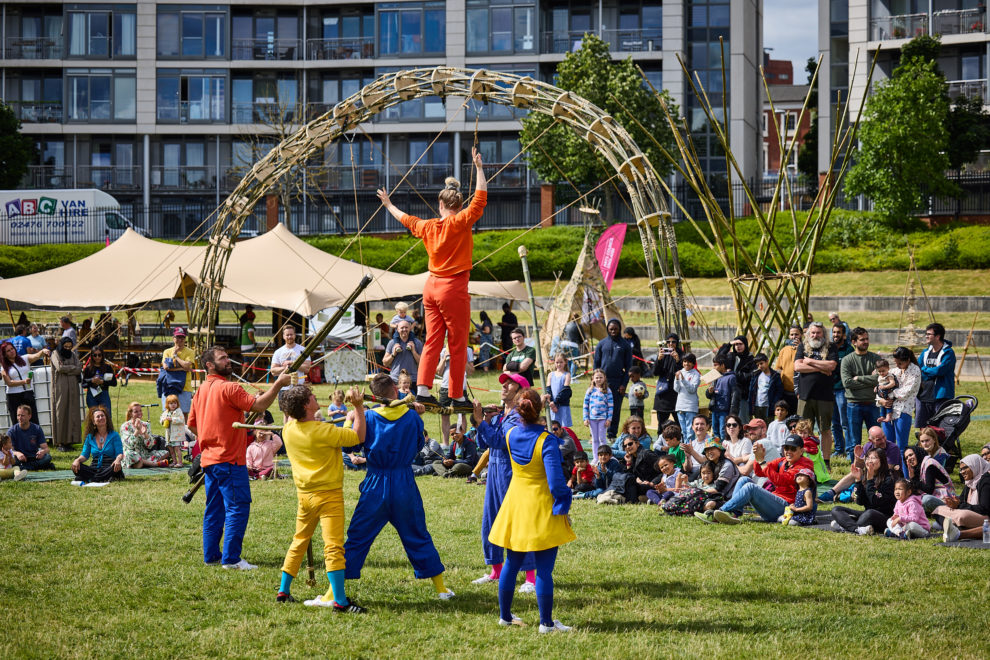
I was recently asked to join the Imagine Bamboo Summit in Birmingham, UK. This bamboo festival is part of the celebrations of the Commonwealth Games in Birmingham, and it was organized by Imagineer Productions and Orit Azaz. All the photos in this blog are from the festival.
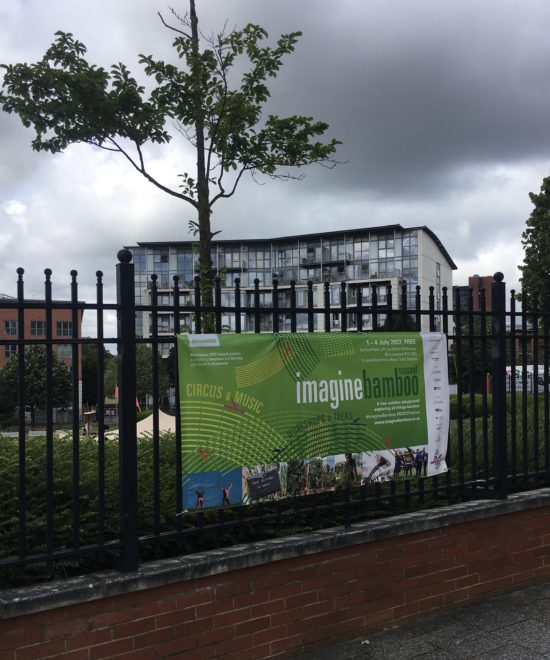
What a wonderful weekend! There were bamboo constructions made by Atelier One, ARUP and local universities; lots of opportunities to make miniature bamboo models; an explanation how to create a bamboo bicycle; performances by the NoFit State circus using props made from Borinda bamboo grown in the Jungle Giants nursery in Shropshire, music from an impromptu bamboo orchestra, a bamboo planting activity and lots of opportunities to meet new friends and old colleagues.
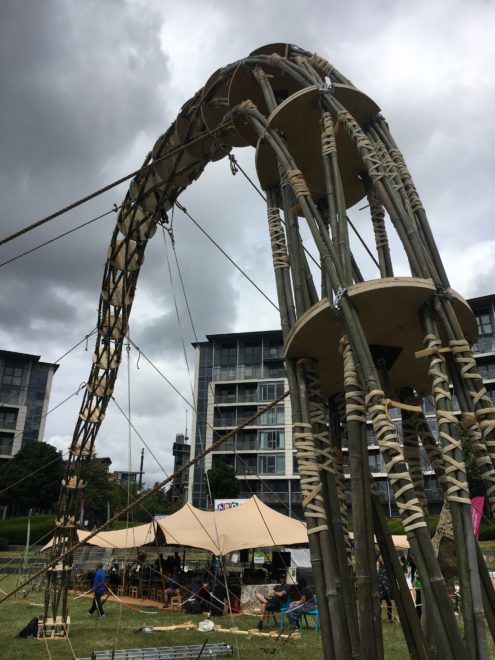
Monday 4 July was hosted by Mayor of the West Midlands Mayor Andy Street, and advertised as a morning meeting like no others. I was asked to provide a short presentation about the opportunities of bamboo in the UK. The following is what I presented:
Can bamboo plants grow in the UK? Certain species will certainly survive here, and I know that we have used locally grown bamboo for some of the installations today. I have been told that there are thriving bamboo nurseries in Yorkshire and in Shropshire. I have visited several healthy bamboo groves in Cornwall, and Kew Gardens has a wide selection of healthy and happy bamboo clumps. However, not all bamboo species will feel comfortable here, as the British climate will not be good for tropical bamboo varieties, but we can find the right species for the right place.
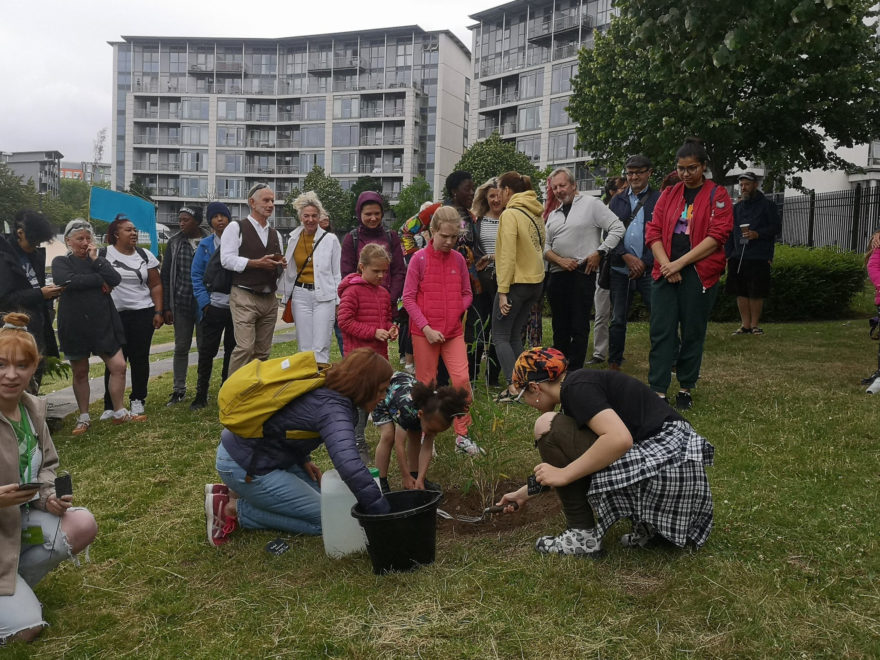
Bamboologic is planting several types of bamboo on its land in Portugal and Spain, and so far the plants are responding very well. The main questions here in the Midlands would be if and how bamboo conforms the rules and regulations of DEFRA, and whether there is enough land to plant enough bamboo to make it worth the investment. The good thing is that the land does not have to be prime agricultural land, as bamboo grows in poor soils.
Would planting bamboo in the UK contribute to sustainable development? I see a number of real opportunities, so let me explain.
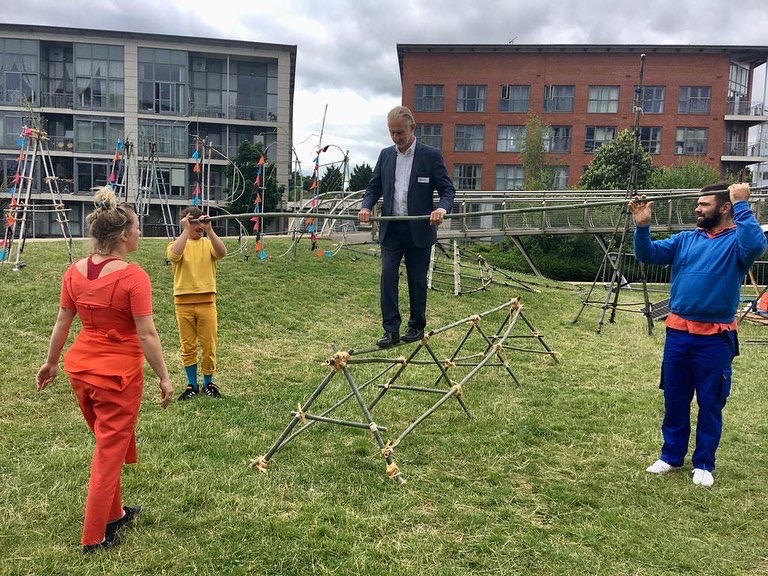
Provided you use the right species of bamboo; it is a fast-growing option to create green spaces in the city. Be careful, that some bamboos have strong roots that will extend far, but if you use so-called clumping bamboo that should not be a major concern. It is common knowledge that any additional vegetation is good for human health and wellbeing and bamboo has the added advantage that wind in a bamboo canopy provides a mystical noise that adds to feeling well.
In many parts of the world, bamboo is used to shore up river banks and control erosion, because its roots are strong and they form a thick mat that holds soil, maintains moisture and stops earth movement. This is something that would be a real asset to British waterways as well, and especially with increased flooding risks from climate change, this could be an important benefit.
As all bamboo species are biologically speaking a type of grass, bamboos grow very fast and every year they produce new shoots naturally. A bamboo woodlot is therefore a very effective natural tool to help clean waste water. The roots absorb pollution, and this is transported into the culms, through natural osmosis. It has been proven to work in developing countries, and there are several active bamboo waste water treatment facilities in France. If it works in France, it will work in Britain (even after Brexit).
Whether you could use bamboo to clean up former mining ground and soils polluted with heavy metals is still the subject of research, but it is another likely use of bamboo. This would be particularly useful in the Midlands where you have several abandoned coal mine pits with associated waste ground. What is already being explored in The Netherlands is the use of bamboo to reduce nitrogen pollution from agriculture, both by planting bamboo on agricultural borders and by ploughing bamboo biochar into the soil
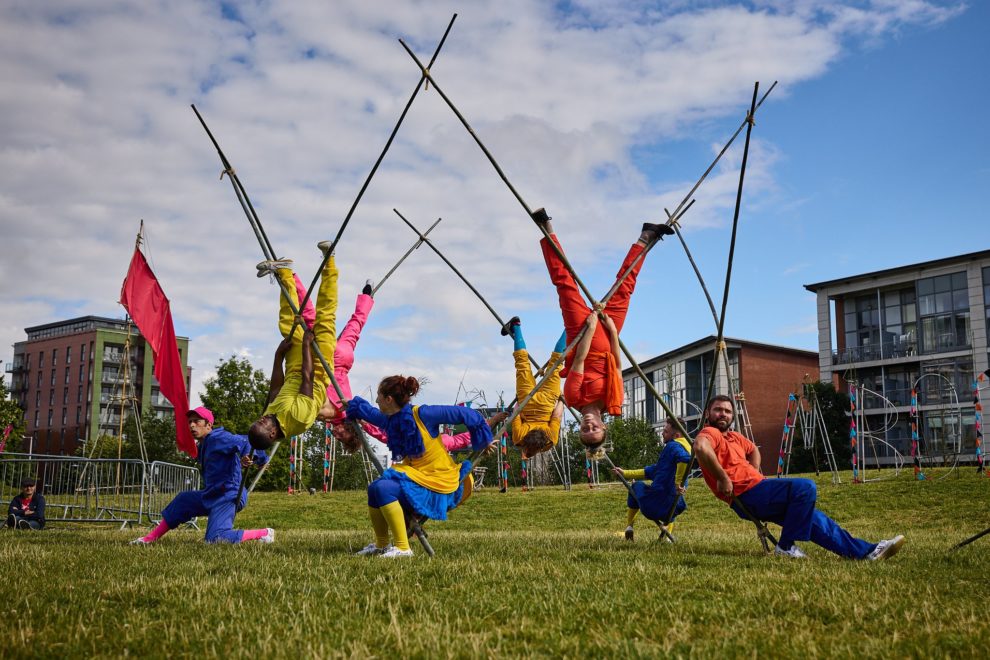
NoFit State Circus on a structure from local Borinda bamboo poles
Maybe the most exciting aspect of creating new bamboo forests is the carbon sequestration effect of bamboo. The annual replenishment of shoots, the fast growth of new poles and the fact that the roots stay healthy even when you harvest poles, means that bamboo plantations are very effective natural carbon sinks. When you then use the bamboo to manufacture durable goods, the carbon is locked-in for a considerable period of time. Planting bamboo on degraded lands could help British cities to offset their emissions, and if the offsets could be traded, it might be an interesting source of income as well. Bamboologic will have more than 40.000 credits which are available on the open market in July, so this is not a pipe dream.
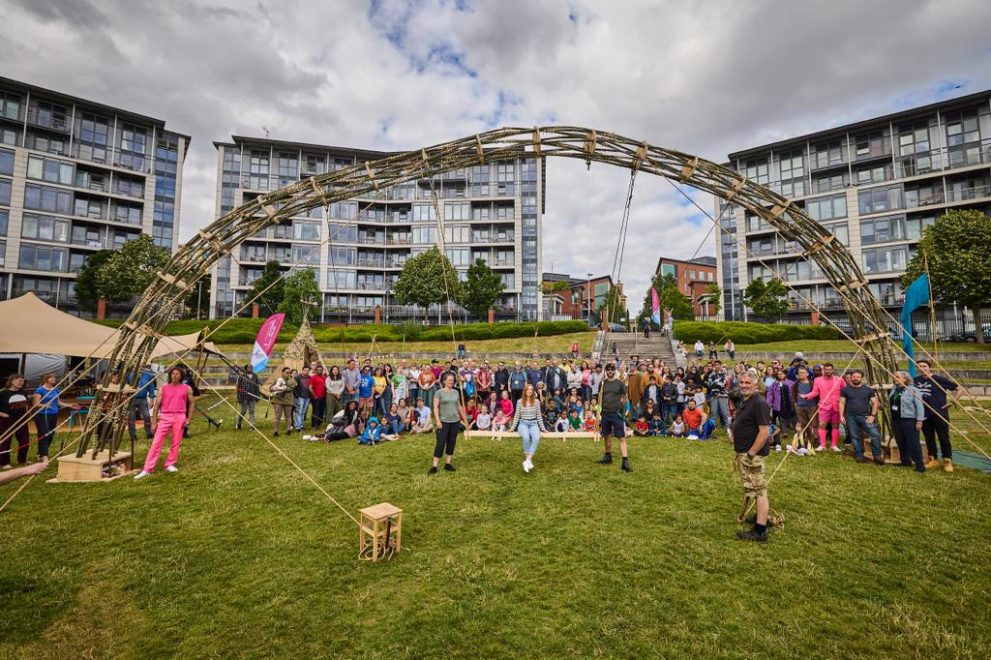
The end of the summit
Once the bamboo is harvested, there is so much you can do with the poles, and the opportunities for the UK are virtually unlimited. You can use bamboo poles for artistic purposes and big structures, as we have seen during the past days. Chris Matthews from Atelier One will tell you more about this is a moment. Bernice Dapaah will tell you how you can use bamboo poles to make amazing bicycles, and you can use the poles for a variety of other applications, including the design products that Rebecca Reubens will tell you about.
David Trujillo will raise the fact that there is still a lot we do not know, and he will tell you of another way of using bamboo – effectively splitting the pole into small strips which are glued back together to make modern building blocks. Contemporary architects and designers are getting more and more excited about bamboo, so I predict that you will see bamboo in many new buildings in the years to come.
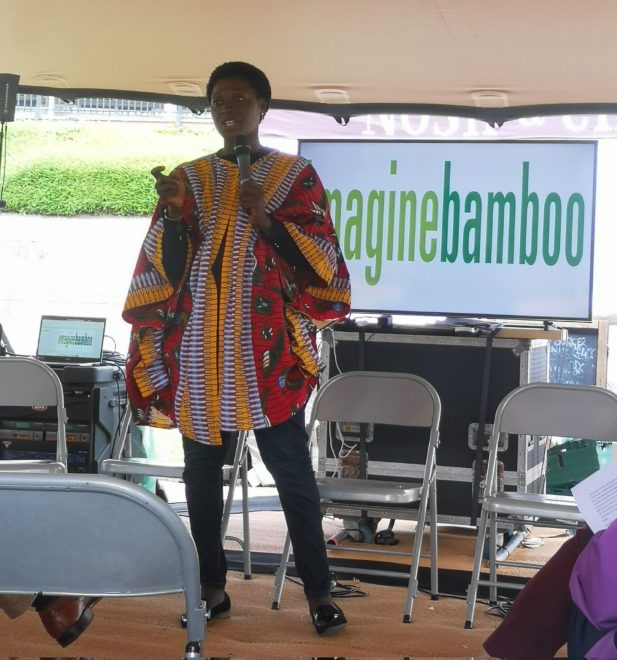
Bernice Dapaah talking about bamboo bicycles
There is an exciting new application, and that is the use of bamboo fibres. They are typically long and strong, and very good for the manufacturing of textiles and all sorts of paper, including tissues. More recently, the bamboo fibres are used to produce the equivalent of fiberglass, and this is now starting to be incorporated in cars hoods, boat hulls and even airplanes components and the blades for wind turbines.
The question is not what we can do with bamboo, but where we get the raw material. Shipping from the other side of the world, with sometimes questionable harvesting procedures and possibly a lax quality control system, make sourcing bamboo poles or sustainable bamboo pulp a bit of a challenge. This is one of the reasons why Bamboologic is creating a bamboo forest in Portugal, and it is a good reason to start something here in Britain.
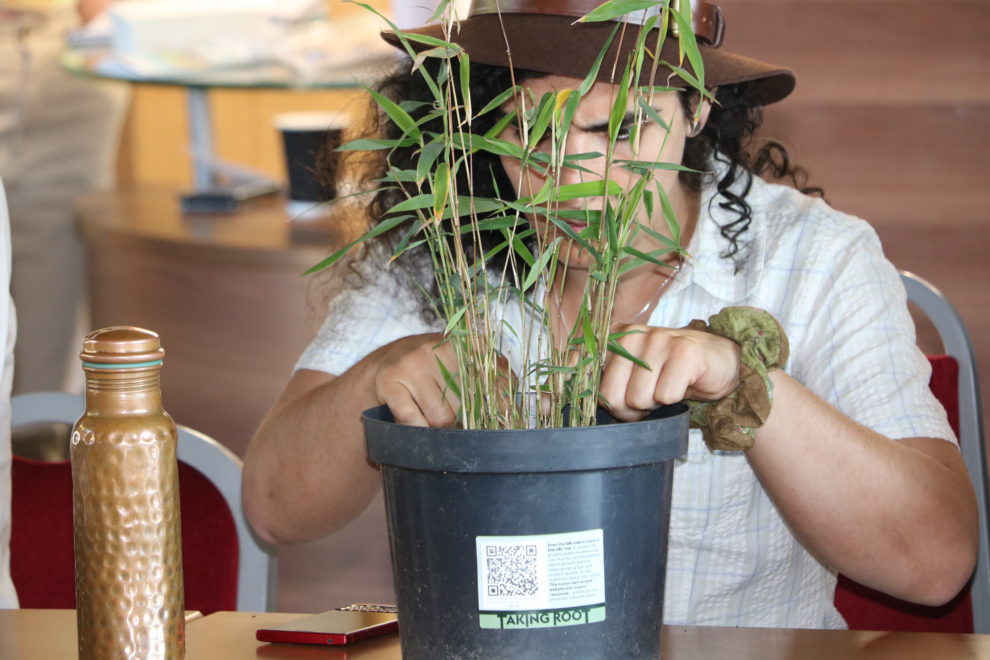
Taking Root in Liverpool, preparations for the Imagine Bamboo Summit
So, let me get back to the question whether there are opportunities for bamboo in the UK. No question – many possibilities. The biggest challenges for growing bamboo is the fact that it is a non-native crop, and you need land to make it a commercially viable operation. The challenge for making things from bamboo is the reliable supply of sustainably harvested raw material as most of it currently comes from Asia. My partners in Bamboologic and I are creating the largest bamboo forest in Europe. If we can plant more bamboo in Europe, and even here in the UK, we can overcome that hurdle as well.
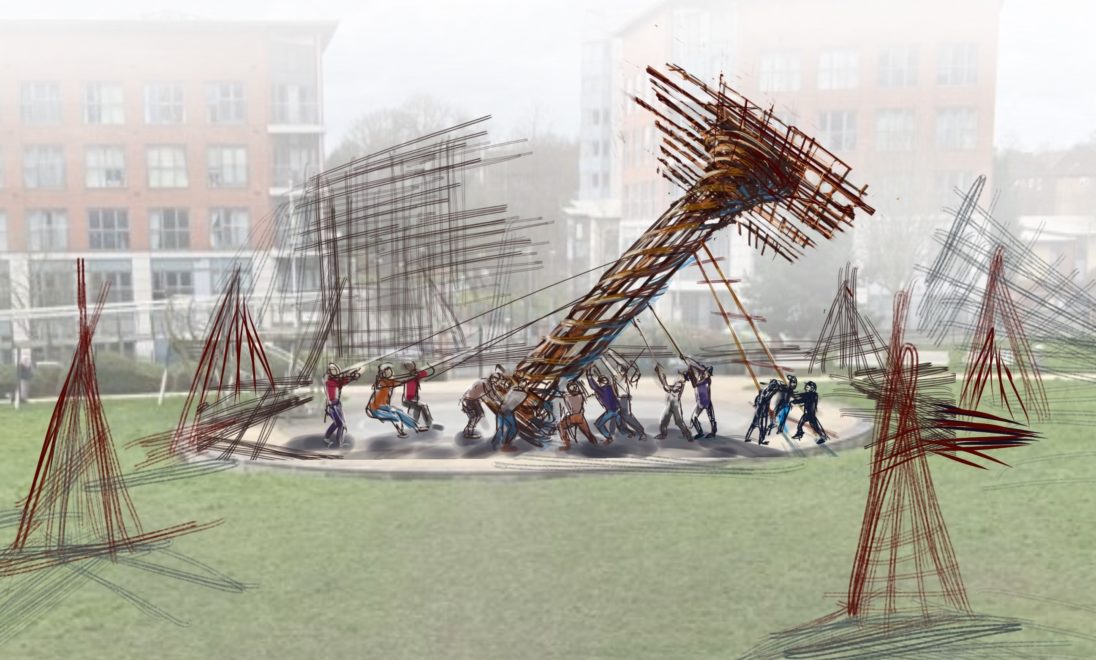
Imagine Bamboo Summit Image by Dan Potra

0 comments
Write a comment